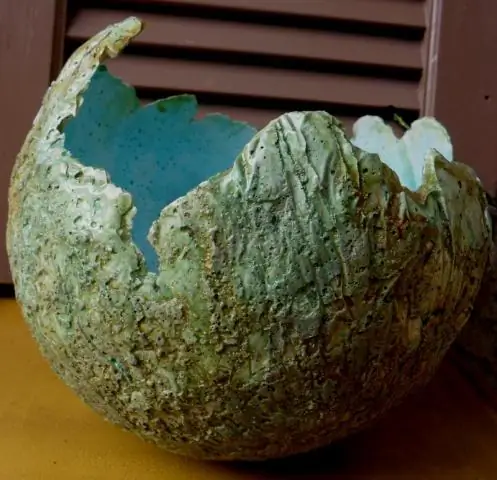
Table of contents:
- Author Bailey Albertson [email protected].
- Public 2024-01-17 22:26.
- Last modified 2025-06-01 07:32.
Autumn grape transplant: advice from the pros

Everyone loves grapes. Since this culture is not very whimsical to the conditions of detention, many amateur gardeners grow it on their plots. But often in practice, questions arise about caring for grapes, namely: how to transplant it correctly, especially in the autumn.
Content
- 1 Types of grapes, especially their transplant
- 2 Optimal age for transplant
- 3 Basic rules
- 4 The most common ways
-
5 Preparation
- 5.1 Cooking a grape bush
- 5.2 Pit preparation
-
6 The process of planting dug grapes in various ways
- 6.1 Transplant with a clod of earth
- 6.2 Bare grapes
- 6.3 Transfer without land
- 6.4 Gallery: transplant schemes
- 7 Caring for the bush after transplanting
- 8 Video: autumn grape transplant
Types of grapes, features of their transplant
As you know, grapes are popular not only on our tables, but also in the decoration of gardens and personal plots. The most common types of grapes in our latitudes are:
- maiden;
- wild;
- dining room.
Each species has its own characteristics in cultivation, care and transplantation.
For example, wild grapes are completely unpretentious, they can grow in any conditions. Maiden grapes are a separate, "cultivated" variety of wild grapes. These species do not require any special care. Lianas are stable, grow very quickly to a height of up to 20 meters and are capable of wrapping around a small structure in 2-3 years. In order not to overdo it with decorating the territory, you will have to cut off excess vines from time to time.

Wild grapes are used for decorative purposes
Wild grapes do not bear fruit, and the fruits of the maiden grape vine are completely unsuitable for human consumption. But with the help of this beautiful plant, you can transform your yard or garden, disguise the not very aesthetically pleasing courtyard buildings.
Transplanting wild or girly grapes will not require much hassle from you. The main thing is to choose a well-lit place. The plant, although it easily tolerates shading, still belongs to the photophilous.

Maiden grapes will be a great decoration for your site
Table grapes are quite another matter. It is used for fresh food, for making jams, compotes, juices and wine. This means that the main thing in growing table grapes is getting a large harvest of berries, and decorating the site is in second place. It is very important to choose the right place and not make mistakes during the transplant. We will talk about this in more detail.

Table grapes require special care, including attention during transplanting
Optimal age for transplant
So for which bushes do you need a transplant, for young ones or those that are older? Which of them will more easily tolerate this procedure, and what features will you encounter?
Old vines have an overgrown root system that is more difficult to dig out. You can damage the roots, and since they are slowly renewing, the plant will take longer to take root in a new place. Due to the fact that an imbalance occurs between the root system and the aerial part of the bush, a violation of fruiting may occur.
Some gardeners generally do not recommend transplanting grapes. This procedure greatly increases the risk of phylloxera infection. Even a slight interference with the growth and development of the bush can be painful for the plant. But if there is a need for a transplant, the right choice of place and time will help solve these problems.

If you decide to replant grapes in autumn, do it in the second half of October.
Transplanting grapes in autumn has certain advantages.
- In the fall, it is much easier to find suitable transplant varieties for you. At this time of year, the vineyard owners are just finishing their digging, and you will be presented with a wide range of new, fresh seedlings.
- At this time of the year, the soil is usually well hydrated due to the rains. The watering process will be greatly simplified.
- If you are lucky enough to live in the more southern edges, then the soil after transplanting will not freeze to the depth of the roots. Thus, the grapes will grow new roots during the winter.
- Grape vines transplanted in spring will not have time to get stronger, and can suffer from heat during hot summer. Autumn planting excludes this option.
The most suitable time for an autumn grape transplant is from mid to late October.
Fundamental rules
To ensure that the grapes are not damaged and prone to disease, follow the basic rules during the transplanting process.
In order for the root system to preserve its integrity as much as possible, you need to dig out grapes with a lump of earth. If the bush was dug out for transplanting without preserving a coma, during the first two years, inflorescences should be removed on it and not pruned.
By pre-preparing the soil, you will speed up the survival rate of the bush in a new place. Loosen the soil deeply, water abundantly and apply fertilizer to the bottom of the planting pit. Thus, the so-called nutrient horizons will be created, to which new root shoots will be pulled.
It is better to prepare the planting holes in advance, about a month before the process. Otherwise, soil shrinkage can provoke a deepening of the root system.

A planting pit for transplanting grapes is prepared in a month
After digging a bush of grapes, be sure to evaluate it visually. Pruning shoots will be required. Which will balance the volume of the underground and surface parts. If you are replanting a very old bush or plant with severe damage to the root system, it may even be necessary to completely remove the ground part (pruning "black head").
You should not replant grapes of the same variety in the place of an old bush. The soil there is depleted, and if the bush was sick, then you will provoke the transfer of diseases to a young plant
The most common ways
There are several ways to transplant grapes, the most common of which are:
- cuttings;
- seedlings;
- layering.
If an old plant needs to be moved close to its usual place, then it is irrational to dig it up completely. The easiest way is to grow layers; thereby you will also rejuvenate the vine.
In this case, the vine is not separated from the mother plant, but buried under the ground. Over time, the cuttings take root, at the same time feeding on their own and at the expense of the old bush. If the vine for the cutting is too short, it is lengthened by grafting the cutting. You can form layers several times.

A stalk of grapes planted in the ground
Cuttings are usually harvested in the fall, when pruning mature bushes. One-year-old shoots, about 10 mm thick, are suitable for this. Lay them on the ground and sprinkle with sand, a layer of 15 cm, and store that way until February. Then remove and separate all the kidneys, leaving only three. Place the tips of the shoots in water with the addition of the growth regulator. They can be planted when a light green liquid appears when the cut is pressed.

Large selection of grape seedlings
Preparation
In order to start preparing grape bushes for transplanting, arm yourself with the necessary gardening tools and materials. You will need:
- shovel;
- secateurs;
- clay;
- manure;
- fertilizers such as humus, potassium salt, superphosphate.
Cooking a grape bush
- When digging and storing, ensure the safety of the roots of the bush, heel and underground trunk.
- Use a pruning shear to cut the vine about 20 cm above the soil. Remove long shoots. Treat the sections with garden varnish or wax.
-
Dig carefully around the bush at the base, being careful not to damage the brittle grape roots. Gently pry up with a shovel and remove the roots in an earthen coma to the surface.

Dug bush of grapes Dug bush of grapes
- Immerse the dug out bush with roots in the previously prepared mixture. Mix 1 shovel of clay and 2 shovels of manure, add water until the consistency of sour cream is obtained. In this solution, you need to keep the roots for several minutes, then remove and put on the ground.
Pit preparation
We have already said that the grape transplant pit must be ready at least a month before you plan to plant. During this time, the soil will settle a little.
Each grape bush must be planted separately, keeping a distance of at least 2 meters between them. For each bush, a separate planting pit is prepared with the size of 50 X 50 cm and a depth of 65-100 cm. When introducing fertilizers and nutrients into the holes, mix them thoroughly with the soil.
Pour a bucket of water into the pit, pour lumps of clay, fertile soil, sand and gravel on the bottom with a slide.
You can add a handful of barley seeds to the root area when planting. So the bush will take root easier.
If the soil in your area is poor in iron, fix it with iron fertilizers. You can also put rusty nails or cans that have been burnt at the stake in the pit.
The process of planting dug grapes in various ways
Make a small mound in the prepared hole, place a bush on it, straightening the roots. While holding it, fill the hole and compact the ground.
Water each grape bush generously. When the water is absorbed, top up the earth and water again. The earth must be poured so that the shoots with four buds remain in sight.
The resulting hill should be about 8 cm high. Water the transplanted grapes once a week, to the level of the heel roots.
There are several ways to transplant grapes.
Transplant with a clod of earth
This method is used more often for young bushes 1-3 years old. Do not water the grapes a few days before planting to keep the roots together. It is desirable to make the pit large, approximately 1 X 1 meter.
The sequence of transplanting a bush with a lump of earth is as follows:
- Cut off the grapes, leaving only 2 sleeves.
- There should be 2 shoots left on each of the arms.
- Dig in the bush carefully.
- Trim the bottom-most roots.
- Place the plant in the prepared planting hole 10 cm below the previous level.
- Pour soil up to the top of the hole and pour two buckets of water over it.
Bare Root Grapes
The transplant procedure is as follows:
- Cut the vine bush leaving 2-4 sleeves.
- Cut everything on the sleeves. Only 2 shoots with three buds need to be left.
- When digging in a bush, try not to damage the roots that are underground.
- Remove the roots below.
- Transplant the grapes into the prepared pit. The depth should be 20 cm below the previous level.
- Fill the hole with soil to the top, pour two buckets of water.
With this type of transplant, the grapes are likely to recover already next year, and will begin to bear fruit from the second year.
Transplant without land
Transplant procedure:
- Examine the roots carefully. Leave two sleeves in the aerial part, each of which has 2 shoots.
- Remove damaged roots. Also cut off those that were at a depth of 20 cm. Treat the cuts with a mixture of manure and clay.
- Make a small hill at the bottom of the hole. Place a bush on it so that the roots from below encircle it from all sides. Fill the hole, compact and water. Mulch the soil with fallen leaves.
- Cover the transplanted grapes with branches or dead wood for the winter.
Gallery: transplant schemes
-

Grape planting scheme - Grape planting scheme
-

Planting grapes by cuttings - Planting grapes by cuttings
-

Planting a seedling - Planting a seedling
-

Layering planting - Layering planting
-

Layering planting - Another option for layering planting
Bush care after transplant
The main thing is to have time to transplant the grapes before the first frost. The root system is very fragile and may not tolerate cold weather.
Water the grape bushes at first, but not often, but as needed. After you cover the plants for the winter, stop watering.
Grapes transplanted in the fall do not need additional feeding. You provided additional fertilization to the soil before planting, during the preparation of the planting pit.
If you want the restoration of a grape bush in a new place to be faster, and the plant has gained the required volume of the aboveground and underground parts, before winter, you can organize a constant supply of moisture and fertilizers to the area of the heel roots
- At the bottom of the planting pit, on a layer of soil with fertilizers, lay 10 centimeters of drainage from gravel, crushed stone, brick chips.
- Take a pipe with a diameter of 10-15 cm (made of plastic or asbestos) and place it in the hole at an angle. Put its lower end against the gravel in the corner so that the upper end is on the south side and looks out of the hole by 5-10 cm.
- Plant the bush using one of the above methods.
This way you can feed and water the bush directly through the pipe.
Video: autumn grape transplant
As you can see, caring for grapes is a simple and exciting experience. Based on our advice, you will surely cope with the autumn grape transplantation, and as a result, you will get full-fledged fruitful vines. Please share with us in the comments your experience on this topic, or ask questions if you have any. We wish you easy work and comfort in your home!
Recommended:
How To Carry Out The Interior Decoration Of A Bath And Steam Room Yourself (with Video)

Useful advice on waterproofing, insulation and vapor barrier of the bath; materials used
How To Clean The Microwave, Descale The Kettle And Remove Grease From The Stove Handles, Tidy Up Burnt Pots And Carry Out Other Cleaning

How to quickly carry out a general cleaning of the house: wash the microwave oven and stove handles from grease, descale the kettle, scrub burnt pots, etc
How To Wash Socks At Home, Especially For Different Materials, Manual And Machine Methods, How To Wash White Socks

How to wash white, black and colored socks. Effective ways to remove stains by hand and in a washing machine. How to wash children's socks from various dirt
Dismantling The Roof, Including The Main Stages Of Carrying Out, As Well As Features For Different Types Of Roofs

Situations in which it is necessary to dismantle the roofing. The procedure for dismantling the roof. Features of dismantling roofs with different roofing
Whiskers In Cats And Cats: What Are They Called Correctly And Why They Are Needed, What Will Happen If You Cut Them And Why They Fall Out Or Become Brittle

Features of the structure of the mustache in cats. What are they called and where they are located. What functions do they perform. What problems can a cat with a mustache have? Reviews
